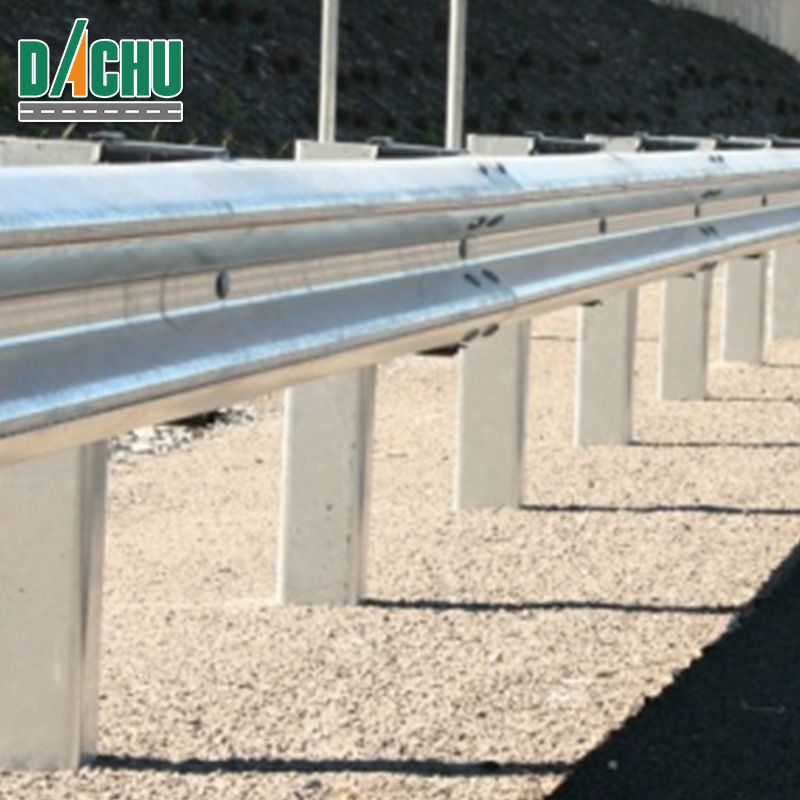Hot-Dip Galvanized W-Beam Guardrail: Ensuring Safety on Roadways
Hot-dip galvanized W-beam guardrails are an essential safety feature on roadways worldwide, providing protection and preventing vehicle collisions. In this article, we will explore the significance and benefits of hot-dip galvanized W-beam guardrails, their construction, installation, and why they are the preferred choice for road safety authorities. From their durability and corrosion resistance to their cost-effectiveness and easy maintenance, hot-dip galvanized W-beam guardrail play a crucial role in safeguarding motorists and minimizing the severity of accidents.

Hot-dip galvanized W-beam guardrails are barriers designed to prevent vehicles from leaving the roadway and colliding with hazardous objects or entering opposing traffic lanes. They consist of galvanized steel beams, which are shaped in a W-profile to provide maximum strength and stability. The hot-dip galvanizing process involves coating the steel beams with a layer of zinc, ensuring excellent corrosion resistance and durability.
Advantages of Hot-Dip Galvanized W-Beam Guardrails
Durability and Corrosion Resistance
Hot-dip galvanized W-beam guardrails are built to withstand the rigors of outdoor environments. The galvanizing process creates a protective zinc coating that acts as a barrier, preventing corrosion and rust formation. This durable coating ensures that the guardrails can withstand exposure to various weather conditions, including rain, snow, and extreme temperatures, without compromising their structural integrity.
Effective Crash Mitigation
The primary purpose of hot-dip galvanized W-beam guardrails is to mitigate the impact of vehicle collisions and protect motorists. The W-shaped design of the guardrails provides superior strength and energy absorption capabilities, effectively redirecting and containing errant vehicles. When properly installed, these guardrails can minimize the severity of accidents and reduce the risk of vehicles leaving the roadway or colliding with hazardous obstacles.
Cost-Effectiveness
Hot-dip galvanized W-beam guardrails offer long-term cost-effectiveness. The galvanized steel construction provides exceptional durability, resulting in a longer service life and reduced maintenance and replacement costs. Additionally, the corrosion resistance of the galvanized coating eliminates the need for frequent repainting or additional protective coatings, further reducing maintenance expenses over time.
Easy Maintenance and Repair
Maintaining and repairing hot-dip galvanized W-beam guardrails is relatively straightforward. The galvanized coating requires minimal maintenance, typically limited to routine inspections for damage or wear. In the event of a collision or damage, individual guardrail components can be easily replaced without the need for extensive repairs or complete replacement of the entire barrier system, ensuring quick and cost-effective repairs.
Compliance with Safety Standards and Regulations
Hot-dip galvanized W-beam guardrails are designed and installed to comply with safety standards and regulations set by road safety authorities. These standards ensure that guardrails meet specific performance criteria, such as crashworthiness, vehicle containment, and deflection limits. Adhering to these standards ensures the effectiveness and reliability of the guardrail systems in protecting motorists and minimizing the severity of accidents.
Conclusion
Hot-dip galvanized W-beam guardrails are critical safety features on roadways, providing protection and mitigating the impact of vehicle collisions. Their durability, corrosion resistance, cost-effectiveness, and ease of maintenance make them a preferred choice for road safety authorities. By choosing hot-dip galvanized W-beam guardrails, roadways are equipped with a reliable and long-lasting safety barrier that ensures the safety of motorists and helps prevent accidents.


